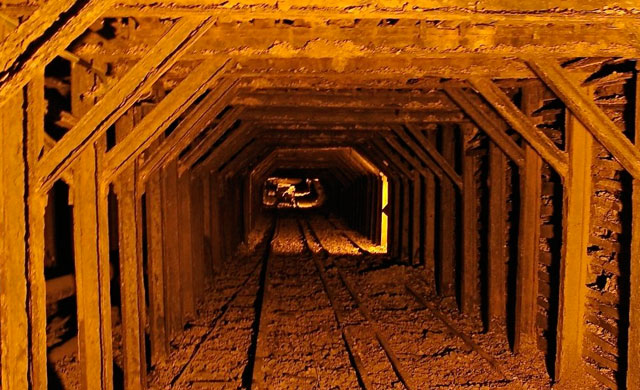South Africa is prone, like most African States, to erupt in a flurry of violence when the last straw breaks the camel’s back. The situation at Marikana, wherever the blame lies, has unfortunately been unscrupulously capitalised upon by those wishing to shift the balance of power in the run up to the Mangaung (Bloemfontein) ANC elections. The story reads a bit like a soap opera, a bit like a Shakespearean tragedy and has elements of Evelyn Waugh’s Black Mischief – mostly in Malema. However, as the present situation plays out there will be heavy ramifications for South African stocks, the Rand, and our London listed mining Companies – such as Lonmin (LSE:LMI), Aquarius Platinum (LSE:AQP), Impala (LSE:IPLA), Anglogold (LSE:AGD), (LSE:CMCL), Eastern Platinum (LSE:ELR), GoldPlat (LSE:GDP), Jubilee (LSE:JLP), Sylvania (LSE:SLP).

(And if you want to see some South African politics watch this video)
Marikana a fuse?
The rumblings of discontent have been ever present in South Africa, from Sharpeville through to the recent annual wage strikes, a pattern of push and push back. But it seems that now we are stepping towards a runaway point when the socially marginalised are pushed too far, and those trying to whip up the winds of political change can capitalise on the discontent and pressurise the incumbent power brokers or ferment outright revolt.
South Africans are sitting uneasily as the disenfranchised are slowly finding their voice and the spark lit at Marikana has spread throughout the other mines and is starting to rear its head in other industries, such as farming with riots on the N1 at De Doorns and Ceres, blocking the country’s main artery with rioters chanting Malema and stoning the Western Cape’s Helen Zille. Marikana’s legacy is still fanning the flames in the Witwatersrand as stories of planted weapons and Cyril Ramaphosa’s email orders for “concomitant action” were leaked (more about Cyril’s weaving and tangled web later on).
The issues of exploited migrant labour, a stratifying tribal and political class, up and coming elections, high youth unemployment (and their radicalisation) are feeding the unease, as has been seen across North Africa with the Arab Spring. Now South Africa seems as if it is sitting on a knife edge, on one side chaos and on the other business as usual … if clever politicking manages to navigate the present minefield.
Labour Broking
The ANC is part of the tripartite alliance, alongside the SACP (South African Communist Party) and COSATU (Congress of South African Trade Unions). This unholy alliance is the bedrock of modern day SA politics.
A major disagreement between COSATU and the ANC has come from the use of Labour brokers – or essentially an age old practice where a Company employs another Company to round up, house and transport large workforces for a fee. The labour broker takes a cut and gives a chunk to each worker – so headline wage packages aren’t always what they seem and the worker is often lumbered with unavoidable extra costs – like taking the King’s Shilling.
Even though this practice has been outlawed in Namibia it is as old as they come. In the 1900’s Rhodes’ & Barney Barnato’s men would ride off to local chiefs and trade various items for hands in the prospects at Kimberley, whilst today companies such as Murray Roberts and JIC (where one of Zuma’s sons is a director) open booths in high unemployment rural regions, such as Lesotho, where many of the rock drillers in the Platinum mines come from. At present 30-40% of labour at the mines is thought to be contracted, with other industries heavily involved. One Company that could face problems is Adcorp if SA goes down the same path as Namibia.
It is bad, but it’s also good. It provides employment, and in a country like South Africa, where rural education is low, a labour broker can provide benefits in terms of looking after the individual’s welfare as well as providing work through alleviating employment friction. Unfortunately this isn’t always the case, as the high bargaining power of the broker against that of the individual leaves an unfair advantage. Furthermore, a Company such as Lonmin, can cancel its contract at a moment’s notice, as they did with Murray Roberts and the K4 shaft a few months back, allowing a Company able to downsize and cut costs rapidly in a tough environment, but leaving the workers at the opposite end of the chain with a complete lack of job security.
Tribalistic Gerrymandering:
The ANC hinges on its branch, region and province structure. Branches meet, and collect their votes for their nominations of the top spots (president, deputy president, chairman, secretary-general, deputy secretary-general, treasurer and 80 NEC members), which move to regional and provincial nominations, and then onto the national conference where each branch (that is in good standing) votes in a secret ballot. 90% of the roughly 4000 seats at the national conference are made up from branches, with the balance coming from COSATU, the Woman’s league and the ANC youth league.
However, the number of branches in each region changes depending on who is in power. For example, Zuma’s Zulu heartland of KwaZulu Natal only had c.600 seats at Polokwane (Pietersberg) in 2007 compared to Mbeki’s Eastern Province’s c.900.
The balance has shifted now with the Eastern province down to 676 and KwaZulu Natal up to 974. The point is that Zuma is a Zulu and Kwazulu Natal is the Zulu heartland, and Mbeki was Xhosa with its tribal origins in the Eastern Cape, so whoever is in power bumps up the branches in their respective region – with a little of extra funding from central government.
The Polokwane Conference in 2007 swung in Zuma’s favour due to his allegiance with the ANC Youth League, Cosatu and Women’s League, alongside an allegiance with the Pedi or Sotho people of the Northern provinces of Gauteng and Limpopo. In this forged allegiance, two characters spring to mind – Motlanthe, his vice President, and Malema, the then head of the ANC Youth League.
The Politicians
South Africa has been waiting for Motlanthe to emerge from Zuma’s shadow and make his own bid for the Presidency. A recently published biography has led to no clarity on what exactly he stands for, and he hasn’t been forthcoming on his challenge or done any campaigning for either himself or Zuma. In fact the only announced challenger, Mbalula, the present sports minister, former ANC youth League president, and Malema’s mentor, has fallen flat on his face gaining minute support from the Provincial Electoral Committees.
Malema, after falling from grace with his expulsion from the Presidency of the ANC youth league, has been stirring the pot with continuous polemics against Zuma, baiting him on his polygamy, inability to use a condom, and state funding around his own homestead, Nkandla (Astroturf pitches, roadworks and helicopter pads).
Malema has also been caught red handed having just been released on bail for money laundering, where he is accused in the age old vein of African Tender-preneurship to have benefitted from a 16% stake in On Point that won road building contracts in his Limpopo province. He received dividends and apparently a part payment for a Mercedes (typical), but more to the point, is that On Point was formed in the month prior to the tender, which was only supposed to go to Companies with nine or more years experience. In all 16 charges that seem triflingly unimportant compared to the 700+ allegations, including rape, levied at Zuma in 2009 prior to his Presidency.
A desperate trip up to a wedding in Zimabawe to meet the Zanu-PF youth league leader and preach his admiration for the state of Zimabawe’s indigenisation program (Zanu PF’s indigenisation is the ANC’s Black Economic Empowerment, BEE), did not go down too well after his body guards man handled local journalists – with the Zanu-PF big wigs issuing a statement of “no comment” (in fact they are cap in hand with Angola and SA for an emergency loan to put cash in the coffers of Harare or Salisbury – whichever you prefer). Malema has been all guns blazing, and love him or hate him, he does have rabble rousing radical ideas that lock into place with the youth of South Africa … ill thought out policies such as “shoot the boer” and, on the subject of mines and farmland, ”we will take it all back”.
The Politics Now
At present, Zuma has been endorsed by Cosatu, the SACP, the ANCWL, MKMVA and the Veterans League. The provincial executive committees (PECs) of KZN, Free State, Eastern Cape and Mpumalanga have also given their backing to the incumbent – leaving Motlanthe top of the list for Limpopo, Gauteng and the ANC Youth League. It seems as if Motlanthe has wisely been remaining in the shadows, a calculated game whilst he judges his support – especially after ABZ “anyone but Zuma” campaign of Malema and others – which no doubt has denuded him of voters as the wisdom of unity rather that factionalism has taken hold of the ANC structures. As the actual election is a secret ballot, and with the precedence of a sharp switch in 2007 from Mbeki to Zuma there is no certainty even with overwhelming support – but it does look as if Zuma is sitting pretty for the time being.
There is one interesting change so far, and that is the rise of Cyril Ramaphosa and his nomination for Motlanthe’s Vice Presidency (with Zuma’s Natal at the forefront of the nomination) although that has hit a minor stumbling block as hack jobs have become the order of the day. For example the Marikana Truth article, alleging Cyril Ramaphosa’s involvement in labour broking. But where there’s smoke there’s fire– after sixteen years in the private sector and after his chairmanship of the NUM (National Union of Mineworkers), he has amassed a considerable fortune that is heavily vested in the mining industry, but it’s more likely his “concomitant action” comment was to pour oil on troubled waters.
Cyril Ramaphosa has a 9% stake in Lonmin through his investment vehicle Shanduka, which has a 51% holding in Inclawa Resources. The money was given to Ramaphosa on a loan basis by Lonmin, after a placement with Xstrata. Companies in SA have to have black ownership so Lonmin raises money and gives it as a loan to one of their Board members to increase their BEE credentials – it’s a robin hood strategy of redistribution of wealth from the colonialists (if you can still call them that) and looks kosher on the surface, but it always goes to the same guys (look at Flemiro investment and their holdings in Zimbabwe). It appears to some that his role is a little than that of government fixer, not just an investor and non-independent board member, and of course Malema has jumped straight on the denunciation bandwagon with his ANCYL chums.
It looks like Zuma is hedging his bets by allying with Ramaphosa, whilst ousting and encircling Motlanthe to force his hand – Impondo Zenkomo (Horns of the Buffalo) – so the battle lines are being drawn for a modern Mfecane – Pedi/Sotho vs Zulu, youth vs age and Business vs ANC core ideals.
Conclusion
All this just highlights the gap between the ANC leadership from 20 years ago. They are corporate, aloof from their roots and corrupted by greed – and it was predictable. Malema is a fly in the ointment but he could turn out to be the elephant in the room, if the fraying social foundations of South Africa are pushed to a climax. Motlanthe’s challenge to Zuma, if it ever comes, will be with populist moves in sync with Malema and the youth League, which you might just be seeing with his attack on labour brokers and his continued isolation from the Zuma camp.
The good thing is South Africa has a way of violently spiking and switching to calm in an instant and hopefully this is all it is, a flash in the pan – but the escalation in frequency and geological regions of the riots is telling us the momentum of restlessness is on the rise. However the story plays out, there is one thing for certain, South Africa, is fraught, taut, stepping towards fever pitch and precariously balanced at this moment.
















Ahhh Julie. You look so lovely! And even though you know you looked fab in that fishtail on the shoot, this Grace Kelly frock was MADE for you.